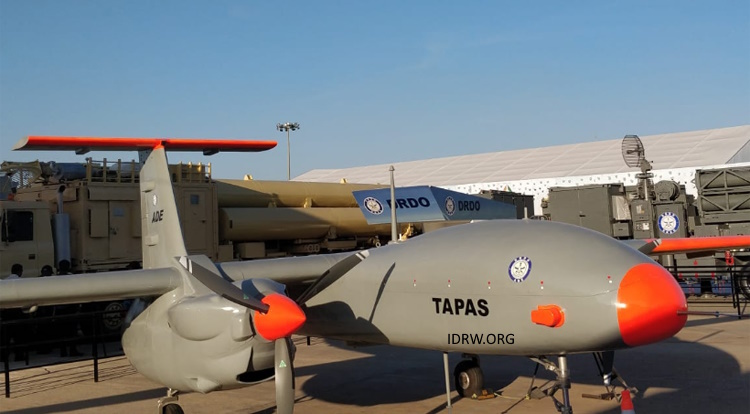SOURCE: RAUNAK KUNDE / NEWS BEAT / IDRW.ORG


The Defence Research and Development Organisation (DRDO) is gearing up for a crucial test of its Tapas Medium Altitude Long Endurance (MALE) Unmanned Aerial Vehicle (UAV). In the coming months, Tapas will attempt to reach an altitude of 32,000 feet, a significant improvement over its previous performance.
This push for higher altitude capability comes after DRDO implemented weight reduction and drag reduction measures on the Tapas. These modifications aim to enhance the UAV’s overall performance and meet the Indian Air Force’s (IAF) requirements.
The upcoming test will see Tapas in its full configuration, including its Electro-Optical (EO) payload. Notably, this payload has previously been successfully tested at 28,000 feet. However, the IAF’s service requirement for the Tapas demands an operational ceiling of 30,000 feet.
While the upcoming test signifies progress, DRDO must bridge the gap between the achieved 28,000 feet and the desired 30,000 feet service ceiling. The additional 2,000 feet targeted in the upcoming test will be a crucial indicator of the success of the weight and drag reduction measures.
The outcome of this test flight will be critical for the Tapas program. If successful, it could pave the way for further trials and potential IAF adoption. However, if the Tapas fall short of the 30,000-foot threshold, DRDO might need to consider further modifications or explore alternative solutions to meet the IAF’s needs.
The Tapas UAV program holds strategic importance for India. A successful domestic MALE UAV would provide the Indian armed forces with a critical surveillance and reconnaissance tool, enhancing their situational awareness and operational capabilities.
NOTE : Article cannot be reproduced without written permission of idrw.org in any form even for YouTube Videos to avoid Copy right strikes. Websites doing illegal reproductions will get DMCA and Legal Notices.